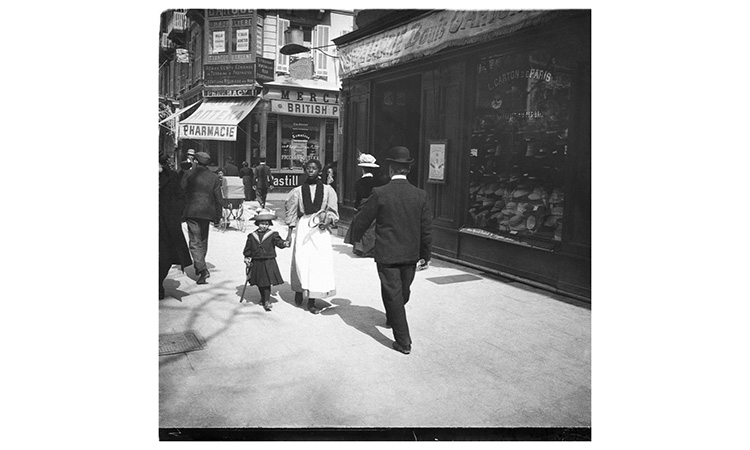Early 20th century stereoscopic photography by general Giglo Karalashvili on National Archives display

The collection of Karalashvili's works is sourced from an expansive archive now found at the National Archives venue. Photo via at.ge.
Stereoscopic travel photographs of Europe, moments captured from marches and public events in Georgia, and other scenes from a century ago, produced by Georgian nobleman, photographer and general Giglo Karalashvili, are on display for visitors of the National Archives of Georgia in Tbilisi.
Comprising photographs created using the method of stereoscopic capture using a verascope device, the collection is sourced from the expansive archives - 770 photo negatives and 60 positives - handed by the photographer's estate to the archival venue in 1963.
A pioneer of the then-nascent Georgian photography scene in using novel technology in the late 19th and early 20th centuries, Karalashvili captured moments from his travels in European states from Switzerland to France and Czech Republic to Italy in the 1900s and 1910s.

The photographer captured public events and occasions in Europe during his travels. Photo via at.ge.
To create the photographs of citizens in streets of European cities, stills of everyday life and scenes from public occasions, the multi-talented Georgian nobleman used his miniature verascope. The size and obscurity of the device meant the photos produced featured little sign of passersby noticing the process, leading to a heightened sense of observing street life that can be noticed in these works.
Photographs by Giglo Karalashvili are unique, because the already meagre archive of the early 20th century Georgian photography features no works produced using the stereoscopic technique. His collection is rich with unique moments captured in various cities of Georgia and Europe
- Beso Khaindrava, founder, Kolga Tbilisi Photo Week
The stereoscopic technology itself uses separate scenes captured for the left and right eye to create a combined image, similarly to the modern three-dimensional technology used in visual mediums. The photographs are perceived under a stereoscope, creating a sense for the viewer of being in the midst of the scene. The Tbilisi display brings stills from the photographs in the conventional form.

The miniature size of the verascope device means the process of capturing scenes is rarely noticeable to passersby. Photo via at.ge.
Karalashvili also photographed marches for special occasions, homes and public gatherings back in his homeland, leading to a range of works now credited for preserving material on the historical development of Georgian photography. For the local scene that often lacks historical notes on personalities and works that have been lost with time, the collection of the general's photographic heritage has been noted as particularly important by Beso Khaindrava, founder of Kolga Tbilisi Photo festival.
The exhibition at the National Archives venue is organised as part of this year's Kolga event, with the occasion marking the first public display of Karalashvili's photography in a century. Born in 1844, Karalashvili fell victim of Soviet repressions against Tsarist-era nobility in the 1920s, with the general, photographer, singer and musical artist passing away as a result of health complications stemming from the persecution.
The Stereo Photography of Giglo Karalashvili display will run at the Exhibition Pavilion of the National Archives between October 26-November 20. The venue is located in the corner of 1 Vazha Pshavela Avenue and 40 Pekini Street in the capital city.
 Tweet
Tweet  Share
Share